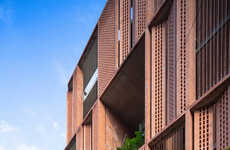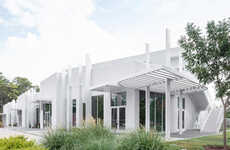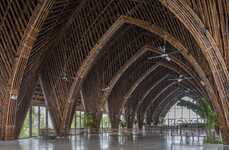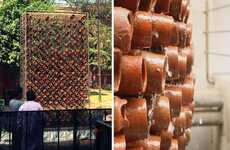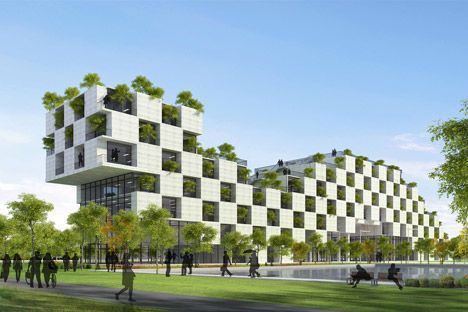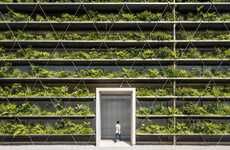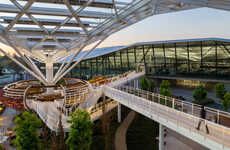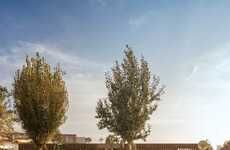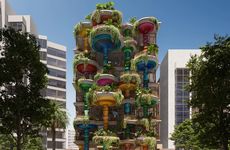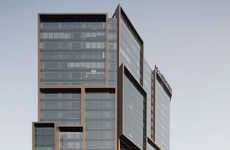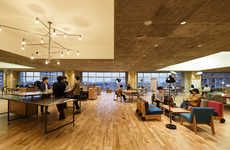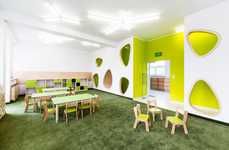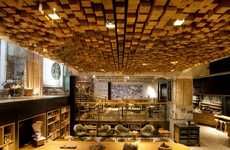
VTN Architects' New Design Naturally Beats the Hanoi Heat
Michael Hines — August 17, 2014 — Art & Design
References: votrongnghia & dezeen
Although it may look odd, there's a reason why VTN Architects' new building looks like a checkerboard stuffed full of trees. The Vietnamese firm has designed a building for FPT Technical University in Hanoi that uses trees and prevailing winds to cut the need for air conditioning. The checkerboard pattern is meant to promote airflow, and the architects have positioned the building so that prevailing winds can sweep through the entire structure.
VTN Architects purposefully filled the building with trees, not only to promote an image of sustainability but to lower the ambient air temperature. In addition to the self-cooling feature, the unique pattern also allows an abundance of sunlight to enter unobstructed, further cutting the building's need for electricity.
VTN Architects purposefully filled the building with trees, not only to promote an image of sustainability but to lower the ambient air temperature. In addition to the self-cooling feature, the unique pattern also allows an abundance of sunlight to enter unobstructed, further cutting the building's need for electricity.
Trend Themes
1. Natural Cooling - The use of natural elements, such as trees, wind, and sunlight, to cool buildings can lead to innovative designs and solutions for sustainable urban development.
2. Green Architecture - Incorporating vegetation into building design not only promotes sustainability but also has the potential to improve air quality, reduce noise pollution, and provide additional benefits to occupants and the surrounding environment.
3. Passive Design - The use of natural cooling methods and optimizing building orientation can reduce the need for mechanical systems and lead to more energy-efficient and environmentally friendly buildings.
Industry Implications
1. Architecture and Design - Innovative building design can integrate natural elements to reduce energy consumption and promote sustainability, providing a competitive advantage and new business opportunities for architecture and design firms.
2. Construction and Engineering - Building sustainable and energy-efficient structures requires advanced construction and engineering techniques, materials, and technologies, creating opportunities for innovation and collaboration in the industry.
3. Urban Planning and Development - Incorporating natural cooling strategies and green architecture into urban development plans can lead to more sustainable and livable communities, providing opportunities for innovation and investment in the field.
2.1
Score
Popularity
Activity
Freshness


